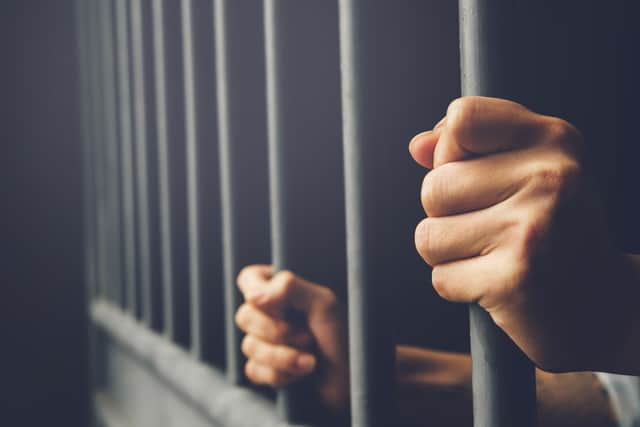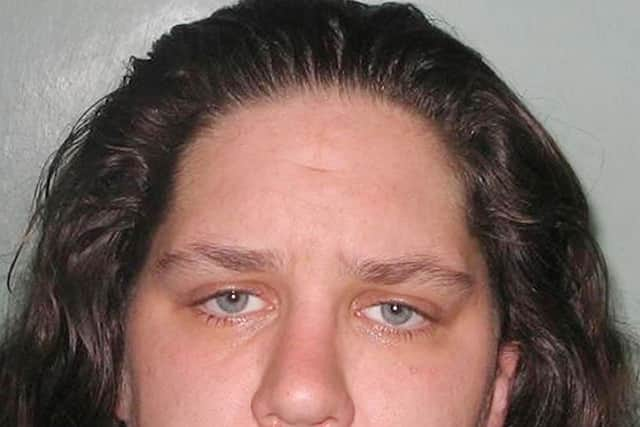Parole: meaning explained, how does the Parole Board make its decisions - and are changes being made?
and live on Freeview channel 276
Many prison sentences have a minimum amount of time which must be served before a prisoner can apply for parole.
This gives the inmate a chance at conditional freedom - however if they fall foul of the rules they risk being sent back to jail.
Advertisement
Hide AdAdvertisement
Hide AdBut why can prisoners apply for parole, does everyone who applies get it, and how does it work? This is what you need to know.


What is parole?
Getting parole means an inmate can leave prison or be released from custody before the end of their sentence.
Those on parole are still considered to be serving their sentence and may be returned to jail if they breach the conditions of their release.
They will be kept under supervision, known as being ‘on licence’ or probation.
Advertisement
Hide AdAdvertisement
Hide AdThe inmate may be released or transferred to an open prison (‘open conditions’).
Rules surrounding parole differ in Scotland and Northern Ireland than those in England and Wales. It is also different for young offenders.
Who can apply for parole?
The Government website states being eligible for parole depends on what type of sentence someone has.
Those serving less than four years are not eligible.
According to the Government’s website, it usually takes six months to reach a decision about a case. Not everyone who applies for parole will get it.
Advertisement
Hide AdAdvertisement
Hide AdHowever, the Government site states cases will be reviewed again within two years if the inmate is unsuccessful in gaining parole.
What is the Parole Board?
An independent body it makes decisions on if a prisoner can be safely released into the community.
The main cases the board considers are those of prisoners serving life or imprisonment for public protection sentences. Extended determinate sentences, as well as sentences for offenders such as terrorists and serious child sex offenders.
It also considers the re-release of priosners who were recalled to jail for breaching their licence conditions.
Advertisement
Hide AdAdvertisement
Hide AdThere are currently 246 members of the board who makes assessments and decisons on cases.
The board deals with 25,000 cases a year which are referred by the Ministry of Justice.
Its website states: “Our job is to determine if someone is safe to release. We do that with great care, and public safety is our number one priority.
“Parole Board decisions are solely focused on whether a prisoner would represent a significant risk to the public after release.”
How does it make its decisions?
Advertisement
Hide AdAdvertisement
Hide AdIn 2020/21, the Parole Board released 4,289 prisoners and refused to free 12,154.
The Parole Board says the first step in the process of deciding if an inmate can be released is reviewing their “dossier” - a collection of documents about them. This includes reports, information oabout their offending and progress made while in jail.
Based on this they will decide if the case should go to a hearing or if the application should be turned down.
If the case goes to a hearing it is conducted by a panel. They meet with the inmate and other witnesses and evidence on the risk posed is heard.
Are changes being made to the parole system?
Advertisement
Hide AdAdvertisement
Hide AdA ‘root and branch review’ had been announced by the Government. A series of proposed changes, including the ability for ministers to override the Parole Board regarding a prisoner’s release, have been unveiled as part of the review.
The reforms would see:
- new powers for ministers to refuse release of highest-risk prisoners
- stronger release test to put emphasis back on public protection
- victims able to attend hearings in full – some to be held in public for first time
Who are some of the people who have been granted parole?
Colin Pitchfork


Pitchfork was jailed for life after raping and strangling two 15-year-olds, Lynda Mann and Dawn Ashworth, in Leicestershire in 1983 and 1986.
He was released in September 2021, but two months later he was back behind bars after probation staff raised concerns about his behaviour. He was understood to have approached young women in the street. There were also concerns he may have been trying to cheat lie detector tests.
His case prompted Justice Secretary Dominic Raab to say the parole system needed a rethink.
Tracey Connelly


Advertisement
Hide AdAdvertisement
Hide AdIn March, the Parole Board decided Connelly, the mum of Baby P, was suitable for release – having rejected three previous bids in 2015, 2017 and 2019 – after hearing she is now considered to be at “low risk of committing a further offence” and that probation officers and prison officials supported the plan.
Now 40, Connelly was jailed at the Old Bailey in 2009 for causing or allowing the death of her 17-month-old son Peter at their home in Tottenham, north London, on August 3 2007.
She was released on licence in 2013 but recalled to prison in 2015 for breaching her parole conditions.
Justice Secretary Dominic Raab appealed the Parole Board’s decision, but on 5 May it was revealed the Parole Board had refused this, meaning Connelly could be freed within weeks.
Advertisement
Hide AdAdvertisement
Hide AdSpeaking after the decision, Mr Raab said the board needs a “fundamental overhaul”
Ryan Herbert


The Parole Board ruled Ryan Herbert of the killers of Sophie Lancaster, who was attacked in a park with her boyfriend because they were dressed as Goths, could be freed from jail.
In March this year it was decided Herbert could be released on licence, 15 years after he took part in the attack.
He was 16 when he was handed a life sentence after admitting murdering the 20-year-old, who died after being beaten as she cradled Robert Maltby’s head in her lap in 2007.
Advertisement
Hide AdAdvertisement
Hide AdHe also pleaded guilty to assault causing grievous bodily harm with intent to Mr Maltby and was given a minimum term of 16 years and three months – later reduced to 15 and a half years on appeal, and then 14 and a half in 2020.
The Parole Board found he had made “significant changes to his life which reflected his remorse, his insight and increased maturity”.
